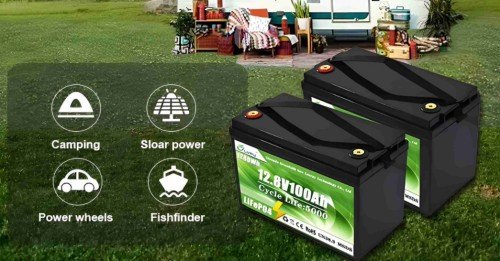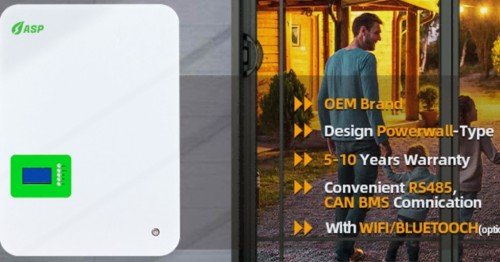The recommended battery size for a home solar system varies based on individual energy needs but generally ranges from 10 kWh to over 100 kWh, depending on daily consumption and desired backup duration.
Choosing the right battery size for your solar system depends on daily energy consumption, backup needs, and more. Here's how to calculate it.
Formula:
Battery Size (kWh) = (Daily Energy Consumption + Backup Power Need) × (1 + System Losses) ÷ Depth of Discharge (DoD)
Want to know how much storage you need? Let's break it down into simple steps.
Daily Energy Consumption
Understanding your daily energy consumption is the first step in selecting the right battery size. The more energy your home uses, the larger your battery needs to be.
Calculating daily energy consumption helps you understand how much storage is needed for your home solar system.
Your daily energy consumption includes everything from lights and appliances to heating and cooling systems. To determine how much energy you use each day, you need to gather data from your electric meter or energy bills. Here's an example of how to calculate it:
-
Find Your Daily Usage: If your monthly electricity bill shows 900 kWh, you can divide it by 30 to find daily usage:
900 kWh ÷ 30 days = 30 kWh/day. -
Check Appliance Usage: Identify energy-hungry appliances like air conditioners, heaters, and ovens. Multiply the wattage by the time you use each appliance to estimate their daily consumption.
-
Sum Total Consumption: Add up the usage from all appliances and devices in your home to get your total daily consumption.
| Appliance | Power (W) | Hours per Day | Energy Consumption (kWh) |
|---|---|---|---|
| Air Conditioner | 2000 | 5 | 10 kWh |
| Refrigerator | 150 | 24 | 3.6 kWh |
| Lighting (LEDs) | 100 | 4 | 0.4 kWh |
| Washing Machine | 500 | 1 | 0.5 kWh |
| Total Daily Usage | 14.5 kWh |
Backup Power Needs
Your backup power needs depend on what you want to run during a power outage. Do you need to power the whole house, or just essential appliances?

Backup power needs depend on which appliances you want to run during an outage. This will influence your battery size.
When the grid goes down, you may only want to power critical devices like your refrigerator, lights, or medical equipment. Consider these factors:
-
Essential Loads1: Identify which devices you need to keep running. A smaller battery may suffice if you're only powering basics like lights, the fridge, and fans.
-
Duration of Backup2: How long do you need the backup power to last? This will influence the battery size. For example, if you need 3 kWh for 24 hours, you need a system that can supply that for the entire period.
-
Peak Power Requirements3: Some devices, like air conditioners or pumps, require a high initial surge of power. Ensure your battery can handle these spikes.
| Appliance | Power (W) | Hours Needed | Total Energy Needed (kWh) |
|---|---|---|---|
| Refrigerator | 150 | 24 | 3.6 kWh |
| Lights | 100 | 4 | 0.4 kWh |
| Medical Equipment | 200 | 6 | 1.2 kWh |
| Total Backup Need | 5.2 kWh |
Depth of Discharge (DoD)
The Depth of Discharge (DoD)4 is how much of the battery's capacity is used before recharging. A higher DoD means using more of the battery’s stored energy.

DoD affects battery lifespan and efficiency. A lower DoD extends the life of the battery but provides less usable power.
For instance, if you have a 10 kWh battery with a DoD of 80%, you can use 8 kWh before needing to recharge. Here's how to factor it in:
-
Choose Your DoD: Batteries like LiFePO4 often have a DoD of 80-90%. The higher the DoD, the more power you can use but at the cost of a shorter lifespan.
-
Balance Between Usage and Longevity: If you want a longer-lasting system, aim for a battery with a lower DoD. However, if you need more immediate energy storage, choose a battery that allows deeper discharges.
| Battery Type | Total Capacity (kWh) | DoD (%) | Usable Capacity (kWh) |
|---|---|---|---|
| LiFePO4 | 10 | 80 | 8 |
| Lead Acid | 10 | 50 | 5 |
System Losses
Solar systems are not 100% efficient, and some energy is lost during the conversion from DC to AC power, as well as during storage and retrieval.

Factor in system losses when sizing your battery. Expect 10-20% of energy loss in your system.
The typical losses in a solar system include:
- Inverter Losses: Converting DC from the panels to AC for use in your home causes around 10-15% energy loss.
- Battery Losses: Storing energy in the battery also incurs a loss, typically around 5-10%.
- Wiring and Other Losses: Energy can be lost in wires, connectors, and charge controllers.
To estimate the total energy you need, add a margin of 20-30% to your daily energy needs. For example, if your daily energy requirement is 30 kWh, you should size your system to account for losses, aiming for a total of 36-39 kWh.
| Energy Source | Energy Loss (%) | Adjusted Need (kWh) |
|---|---|---|
| Panels to Battery | 10 | 33 kWh |
| Battery to Home | 10 | 30 kWh |
| Total Loss | 20 | 36 kWh |
Example Calculation
Now that we've covered the key factors, let's put them all together in an example calculation.

A real-world example helps bring all the factors together to estimate the battery size needed.
Here’s an example to calculate your solar battery size:
- Daily Energy Consumption: You use 30 kWh per day, based on appliances and usage patterns.
- Backup Power Needs: You need 5 kWh for 24 hours of backup.
- Depth of Discharge: Choose a battery with 80% DoD, meaning you’ll use 8 kWh of the battery’s 10 kWh capacity.
- System Losses: Factor in 20% energy loss for the system.
Total Energy Need = 30 kWh (Daily Consumption) + 5 kWh (Backup Need) = 35 kWh
Account for system losses: 35 kWh × 1.2 = 42 kWh.
Now, choose a battery with 80% DoD, so you'll need a 52.5 kWh battery to meet your needs.
| Factor | Value |
|---|---|
| Daily Usage | 30 kWh |
| Backup Need | 5 kWh |
| System Losses | 20% |
| Total Battery Size | 52.5 kWh |
Conclusion
To determine the right battery size, consider daily usage, backup needs, DoD, system losses, and your specific needs.
Footnote:
-
This link explains Essential Loads, helping users determine the critical devices to prioritize during power outages. ↩
-
This link explains Duration of Backup, detailing how to size a battery to meet energy needs over time. ↩
-
This link describes Peak Power Requirements, including how batteries handle power surges for large devices. ↩
-
This link explains Depth of Discharge (DoD), helping users understand its importance in battery usage and longevity. ↩





